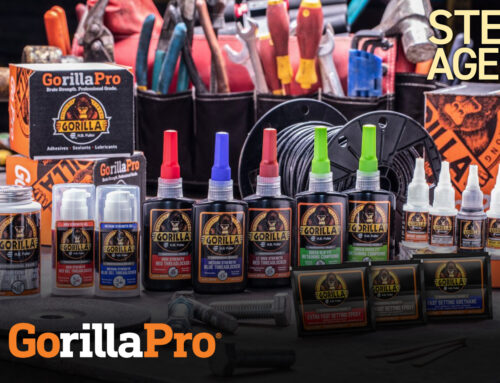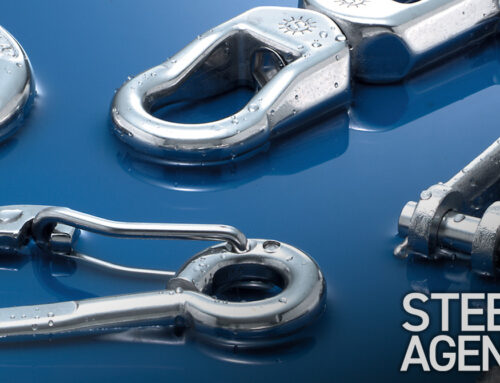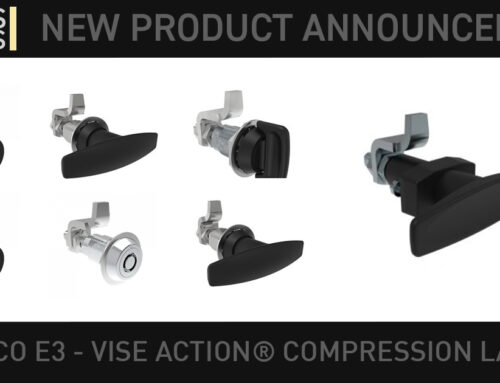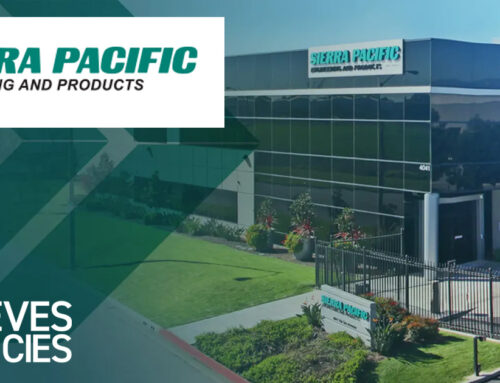What are Captive Fasteners?
Captive fasteners are screws, latches, or similar mechanical fastening devices that remain “captivated” in the panel in which they are installed, so they cannot be easily lost, even when the device is “unlatched”. Captivating fasteners to panels prevents the loss of hardware and the potential damage caused by dropping fasteners into operating equipment. Captive screws are especially useful for applications requiring repetitive fastening.
How are captive fasteners different from other fasteners?
Captive fasteners are different from other types of fastening hardware in that they add a level of safety and ease-of-use. Certainly, any fastening hardware, latch, lock or mechanism adds a measure of safety and security, but in this blog post, we’re talking about the “captive” kind of fasteners.
Some captive fasteners look just like regular screws, but incorporate a retainer made of stainless steel or nylon to allow it to float freely in the panel or door while still remaining “captive” and secure. This prevents the user from losing the fastener, and prevents the fastener from potentially falling inside the enclosure where it might cause damage or injury.
Captive fasteners come in many different shapes and sizes, too. Whether it’s a quick-opening screw with a special Acme thread, a Dzus fastener or a standard threaded screw, these are all available in a “captive” style using a retainer and a corresponding receptacle.
What kinds of Captive fasteners are available?
There are several kinds of captive fasteners. By definition, if the fastener remains somehow attached to the panel, it’s “captive”, which makes this category quite large. However, there are a few basic types that you may be familiar with:
Captive Screws
 Captive screws, also known as “panel screws” or “self-clinching” screws are standard threaded screws, but with a ferrule or retainer which is press fit into the panel using a process called cold forming to keep them attached to the panel.
Captive screws, also known as “panel screws” or “self-clinching” screws are standard threaded screws, but with a ferrule or retainer which is press fit into the panel using a process called cold forming to keep them attached to the panel.
For most clinching fasteners, all you need is an arbor press to install the standoff into your sheet metal panel (which could be made of steel or stainless steel sheets) and your captive screw is permanently attached! You can loosen most captive screws completely, but they never fall out! Southco also offers captive nuts, too!
Quarter-Turn Fasteners
 Quarter-Turn fasteners consist of three basic components: a stud, a receptacle and a retainer, all of which are available in different styles, materials and finishes. Quarter-turn fasteners can be locked or unlocked with a quick 90 degree turn.
Quarter-Turn fasteners consist of three basic components: a stud, a receptacle and a retainer, all of which are available in different styles, materials and finishes. Quarter-turn fasteners can be locked or unlocked with a quick 90 degree turn.
Quarter-Turn fasteners are also available in “turn-to-close/turn-to-open” and “push to close/turn-to-open” varieties, allowing you the option to slam the door and have it latch without any other effort.
Quick Access Fasteners
 In this category of fasteners, you;ll find Fast Lead Captive Screws, Spring-Loaded Plungers, Swell Action Latches, LOCKWELL® Pins, Nylatch Panel Fasteners and Slide Latches!
In this category of fasteners, you;ll find Fast Lead Captive Screws, Spring-Loaded Plungers, Swell Action Latches, LOCKWELL® Pins, Nylatch Panel Fasteners and Slide Latches!
All of these are designed to operate quickly and easily while remaining safely and securely attached to the door or lid panel. Quick access fasteners also provide consistent compression and in most cases, vibration resistance too!
Inject/Eject Mechanisms
 Designed to secure electronics modules that are larger and heavier than just a line card or printed circuit board, these mechanisms insert and eject modules with one simple motion. These are typically seen in server racks and computer enclosures.
Designed to secure electronics modules that are larger and heavier than just a line card or printed circuit board, these mechanisms insert and eject modules with one simple motion. These are typically seen in server racks and computer enclosures.
Inject/Eject mechanisms do more than just hold a panel closed; they are often used to plug/unplug the connectors at the back of the server drawer or computer board in a controlled, precise manner.
What are captive Fasteners good for?
Captive fasteners are designed for a wide variety of applications where repetitive access is required. If you (or your customer) need to access a panel daily, weekly or monthly for diagnostics or maintenance, then a captive fastener is ideal. They never fall out of the panel and get lost, and provide consistent, repeatable performance. In many cases, captive fasteners provide not only security, but an added layer of safety too; if your enclosure contains sensitive electronics, the last thing you want is a metal screw falling onto a circuit board!
There’s also nothing to misplace or lose, which means your enclosure will always be properly closed and sealed!
Captive fasteners can do even more: they can provide consistent vibration resistance to reduce noise, compress a gasket to meet NEMA water resistance ratings, and provide a level of security with unique toolhead options. They also don’t need to be boring! Southco offers many Captive Fastener options that can be colour-matched to your enclosure, or customized to fit your design.
Why would someone use captive fasteners?
Whether you’re a sheet metal manufacturer of high-end electrical equipment, computers, or anything else that resides primarily inside an enclosure, “access” panels need to be trouble-free, reliable, and safe to use. With a simple quarter-turn fastener, you can achieve all of these things, and never risk damage caused by loose hardware falling into the enclosure.
The fasteners are also a “touch point”, and as you may know, touch points create an emotional impact on the end user. Have you ever tried to get into a car only to find the handle is broken? How does it make you feel when the hinges on the door are squeaky? Even if the car runs great, you’ll still have a negative impression of that vehicle.
The fasteners in any enclosure are touch points that create an overall impression of the product (whether that impression is accurate or even true). It’s critical to ensure that your customers (and the end-users) have a trouble-free experience that begins with things like “accessing the doors”. Additionally, if you can prevent accidental damage from screws falling into (or out of) the enclosure, isn’t that worth a little more money?
I want to be clear: I’m not saying that screws, nuts and bolts aren’t great for many (even most) assemblies. They are! But when it comes to certain applications, it’s worth considering captive fasteners even if only to save yourself from complaints or warranty issues.
How do you pick the right Captive Fastener?
Picking the right captive fastener can be a little overwhelming. We are more than happy to put our years of experience to work for you! Call us or use our handy Contact Form and we’ll get started on your project right away.






